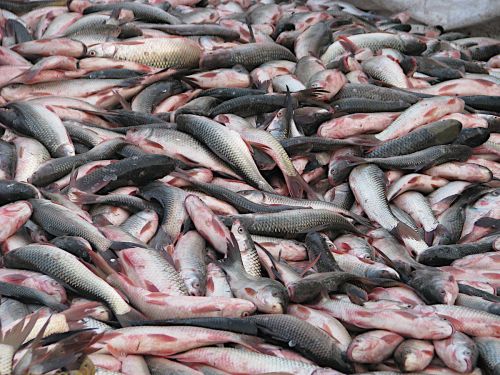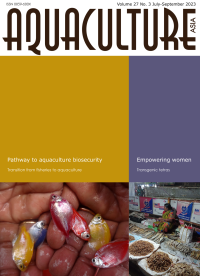A transitional journey from fisheries to aquaculture in Moyna
1 August 2023 | R.N. Mandal, S. Adhikari, B.N. Paul, D.N. Chattopadhyay, P.P. Chakraborti, A. Das, F. Hoque, A. Hussan, G.S. Saha, B.R. Pillai, and S.K. Swain | 737 Downloads | .pdf | 7.35 MB | Freshwater finfish, India, Livelihoods, gender and social issues
This story looks back over the last century at the fisheries scenario in Moyna, a community development block in West Bengal, India. The tremendous success of aquaculture practice in Moyna has strongly influenced farmers of surrounding districts to convert agricultural lands to aquaculture. Capture fisheries in Moyna have had a rich heritage that has gradually evolved over time.
Beginning with traditional deep-water paddy-cum-capture fishery, as practices evolved the fish component of the crop began to take on greater significance, becoming the most profitable part. Over time, farmers have shifted to an aquaculture model, achieving an average yield of 12.5 tonnes/ha/year. This success has encouraged farmers in neighbouring districts to adopt similar practices.
This article documents the transition from an incidental capture fishery to aquaculture and describes the major practices of this culture system.
Creative Commons Attribution.

